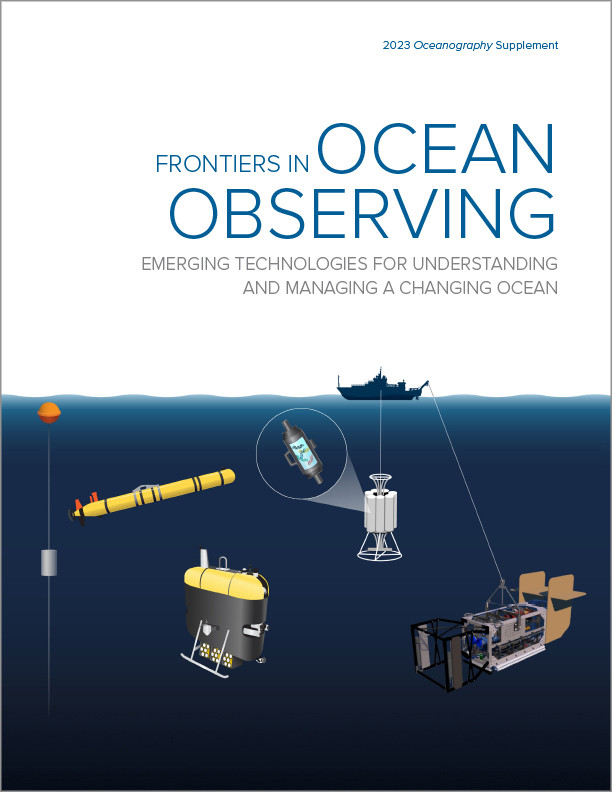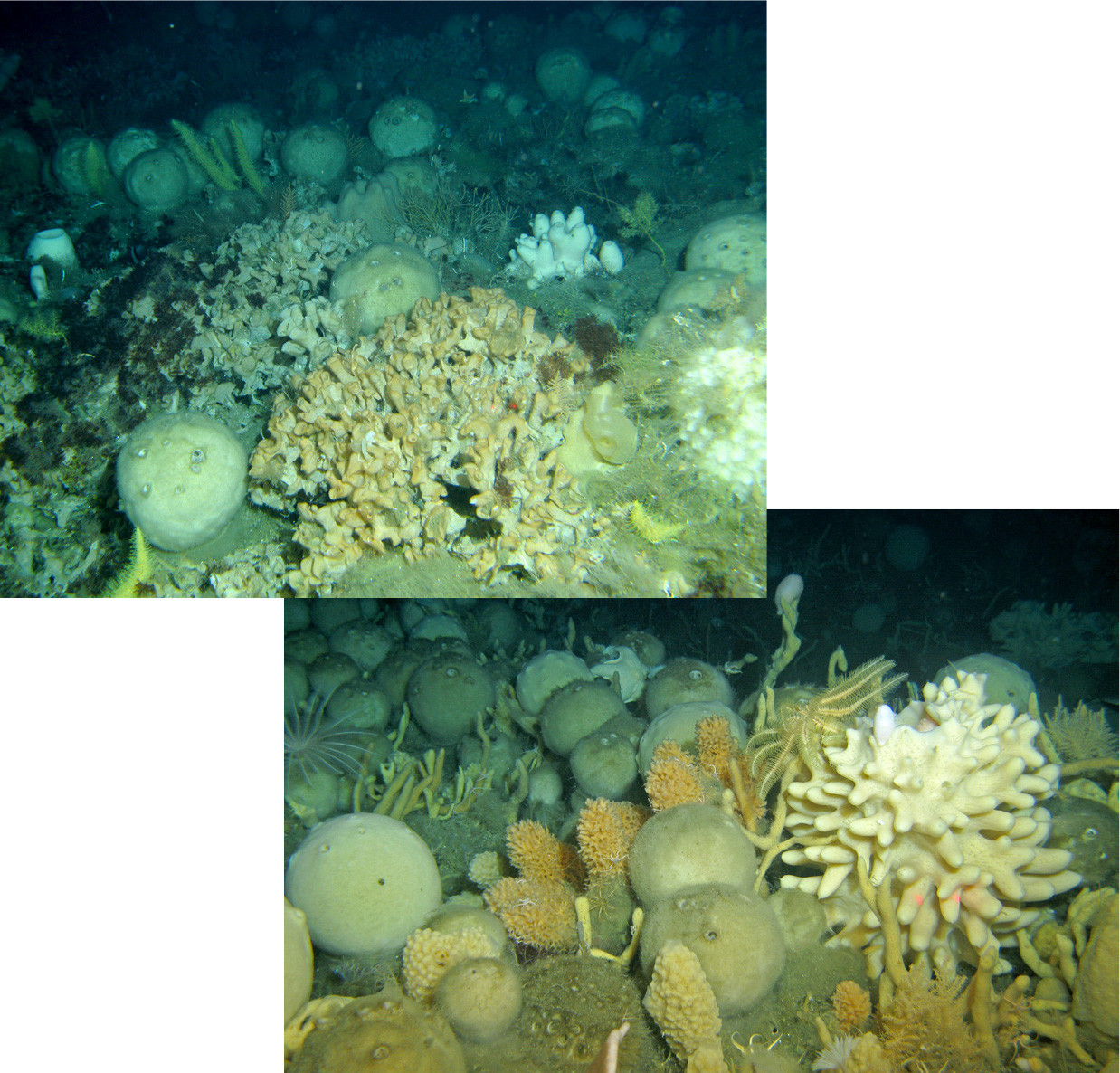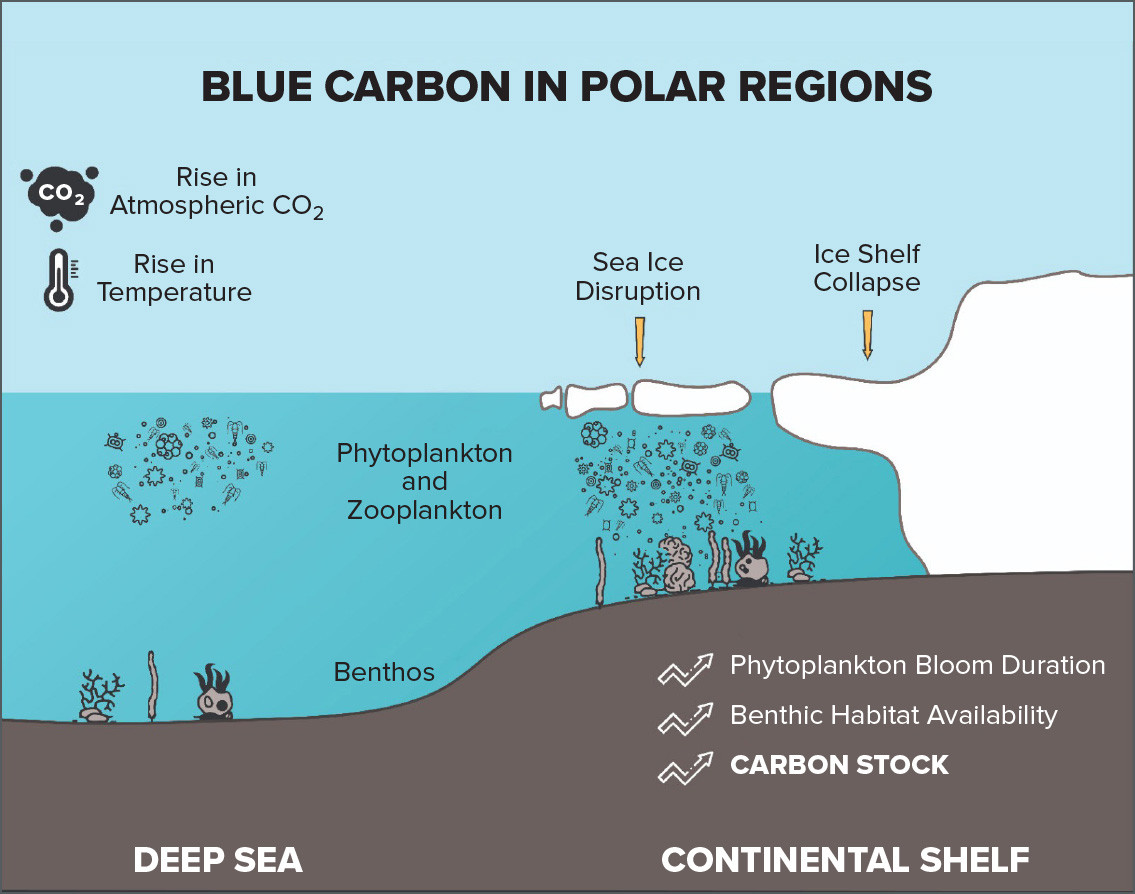Full Text
The removal of carbon from the atmosphere for a long period (sequestration) is an increasingly pressing societal need in order to mitigate the negative effects of climate change. Investment and technology solutions are moving in the direction of industrial carbon capture and storage. To date, this technology is inefficient, expensive, and in some cases, not even net carbon zero. Optimistic estimates suggesting huge investment in infrastructure, which requires resources that include land and fresh water, will only marginally contribute toward the reductions in atmospheric CO2 required to minimize the impact of climate change over the next 50 years (Hankin et al., 2019).
The ocean is a powerful CO2 sink, absorbing ~30% of anthropogenic CO2 output. But, even in the Southern Ocean, the most powerful ocean sink, CO2 outgassing occurs (Nicholson et al., 2022). Outgassing is particularly associated with storm events, which are suggested to be increasing in frequency and intensity as a result of climate change. Additionally, the ocean’s buffering effect is eroding due to climate-associated changes in pH (Iida et al., 2021).
Nature-based CO2 sequestration associated with the ocean and coastal ecosystems (“blue carbon”) is more efficient than commercial carbon capture and storage, and nature does it “for free.” Mangrove forests, seagrass beds, and salt marshes are considered the most efficient and are the best studied. Unfortunately, these valuable natural carbon sequestering resources are in rapid decline. Crucially, this means that CO2 uptake by these coastal ecosystems is much reduced, and they are releasing previously sequestered carbon back into the atmosphere upon their demise.
Among other less well known nature-based pathways to carbon removal and, at least one, Antarctic blue carbon, is growing in response to climate change. Seasonal sea ice extent and duration have been massively reduced in polar regions over recent years, leading to longer-lasting phytoplankton (microalgae) blooms over continental shelf waters (Barnes et al., 2021). As a result, both primary and secondary production (phytoplankton and zooplankton) are in direct contact with the animals living on the seafloor (benthos; Figure 1), providing extended feeding opportunities and demonstrably faster growth (Barnes et al., 2021). Considering the longevity of many polar benthic invertebrates, they are a growing carbon stock if left undisturbed.
|
|
Other types of marine ice retreat are also opening up novel habitats for colonization by marine life. Losses from ice shelves create vast new embayments hospitable to primary production and colonization, and the retreat of marine-terminating glaciers along fjords provides new and increasing habitat for benthos (Figure 2). Owing to high sedimentation rates on polar continental shelves and even higher rates in some fjord systems, a proportion of this accumulated carbon will likely be buried in the sediment. Once burial is beyond the oxygenated or active layer, few microbes are available to recycle any carbon back into the carbon cycle.
|
|
Recent studies are beginning to add empirical data that suggest the polar pathways are contributing considerably to global carbon sequestration (Pineda-Metz et al., 2020). In particular, Zwerschke et al., (2021) found that the amount of total organic carbon (TOC) in sediments of Antarctic fjords with retreating glaciers (~50 g C m–2) was an order of magnitude greater than that previously estimated based solely on epibenthic fauna. If these findings were to be extrapolated across the entire Antarctic continental shelf (4.4 million km2), they would represent 220 million tonnes of carbon (t C) storage.
How comparable this TOC value is to other Antarctic open-shelf regions is unknown, as is how much of this carbon is genuinely sequestered. The sedimentary evidence clearly indicates the need for more detailed investigation of the polar shelf regions, fjords in particular, as nature-based carbon removal pathways. This increasing blue carbon around Antarctica is an ecosystem service of considerable societal and economic value that should be taken into account (Bax et al., 2021). Warming continues to affect sea ice duration and extent. Ice shelves continue to collapse. Marine-terminating glaciers are in retreat. Each year, new shallow sea area is available to phytoplankton populations, and more seafloor opens up as habitat for benthos. Warming is likely to increase metabolic processes and food-web-wide growth, again increasing the rate at which carbon is drawn down, stored, and potentially sequestered in this a rare and powerful negative feedback mechanism to climate change—with lasting benefit to society (Barnes et al., 2021).
At present, the Antarctic is largely protected by conventions and treatises that ban mineral exploitation and limit fishing in an environment that is, as yet, not conducive to commercial exploitation and consequent wide habitat destruction. Adding a further layer of protection to these areas while they are of little commercial value may be advisable in order to safeguard what appears to be a valuable global resource for carbon removal. The UK government currently values CO2 at £46.40 t–1, which translates into £170 t–1 of carbon. A conservative estimate of 1% of primary productivity would be sequestered (Henley et al., 2020), which, on the West Antarctic Peninsula shelf would be 1.9 g C m–2 (Barnes, 2017). If this were extrapolated across the entire Antarctic continental shelf, it would equate to 8.36 × 106 t C y–1 or £1.4 billion removed from the carbon cycle. If immobilized biological carbon is the focus for marine CO2 removal (estimated by Henley et al., 2020, at 12% primary productivity, 22.8 g C m–2), then across the Antarctic shelf, 100.32 × 106 t C y–1 held in medium term (tens to hundreds of years) storage, is valued at £17.05 billion. These values will continue to grow each year with the increasing value of carbon and the increasing potential of the blue carbon pathway. This may be an attractive carbon offset to be distributed among stakeholders agreeing to lasting and meaningful protection of the area.
Antarctic blue carbon potential is one of many understudied carbon removal pathways. Full understanding of the geography and magnitude of carbon sequestration is required to enable placing an appropriate value on the services nature can provide if adequately safeguarded. Investment in gaining this knowledge (to help prioritize protection and meaningful monitoring) would cost only a fraction of that for commercial carbon capture and sequestration, and a fraction of the ultimate value of the carbon sequestered on the Antarctic continental shelf.



